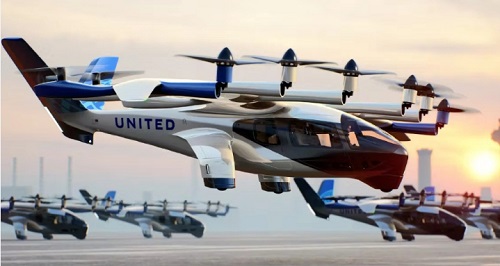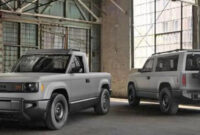Toyota is allocating an additional $500 million towards Joby Aviation to assist the air taxi startup with the certification and commercial production of eVTOL (electric vertical takeoff and landing) aircraft intended for a ride-hailing service. The automaker’s total investment has now reached $894 million since 2018.
This funding from Toyota will be distributed in two installments of $250 million each, with the first one happening this year and the second scheduled for 2025. Additionally, the automaker will form a manufacturing partnership with Joby for the initial phase of commercialization. In 2023, both companies established an agreement that allows Toyota to produce powertrain components for Joby’s air taxi.
Founded in 2009 by JoeBen Bevirt, Joby Aviation is based in California. The company remained low profile until attracting significant attention with a $100 million investment round in 2018, which involved contributions from Intel, Toyota, and JetBlue.
These funds enabled Joby to design a prototype and carry out test flights at a private airfield located in Northern California. Impressed by the progress, Toyota dispatched its engineers to collaborate closely with Joby Aviation.
Joby’s fully electric aircraft features six rotors and accommodates five passengers, including the pilot. The vehicle is capable of vertical takeoff like a helicopter and can transition to forward flight using tilt rotors. According to Joby, it can achieve a maximum speed of 200 mph, cover 150 miles on a single battery charge, and is significantly quieter—up to 100 times—than traditional aircraft.
Recently, the company showcased a few flights over Manhattan and intends to begin commercial passenger services in metropolitan areas such as New York City and Los Angeles by 2025.
At the high-profile Manhattan event, executives from Joby, Uber, and Delta Airlines were present, representing each company’s significant stake in the public venture, which listed on the New York Stock Exchange three years ago. Their core message is clear: Electric taxis are no longer a far-off dream; they are swiftly becoming a reality. Witness it for yourself…
The aircraft, adorned with six bullet-shaped propellers that grace its sleek black-and-white design, looked as if it could lift anything from King Kong to the elegantly constructed vehicle itself. Although it appears light and compact, the empty aircraft weighs around 4,800 pounds, reminiscent of entering a helicopter’s interior.
This comparison makes sense; it can also take off vertically like a helicopter, then transition into forward flight using tilt rotors, powered by four packs of lithium-ion pouch cells. Joby chose not to reveal the identity of its battery supplier, but stated, “they’re cells that are in use in the automotive supply chain today.” (Japanese automaker Toyota stands as Joby Aviation’s largest outside investor.)
Joby asserts that the aircraft can “reach a top speed of 200 mph, travel 150 miles on a single battery charge, and is 100 times quieter than a conventional aircraft.” In contrast, the Alia, created by Beta Technologies, can cover around 288 miles on one charge. It too is an eVTOL aircraft, but is mainly intended for cargo and medical transport, with partnerships established with UPS and United Therapeutics—whereas Joby Aviation focuses on “electric aerial ride-sharing.”
Both firms credibly claim significant sound reduction is achieved. This feature is critical for gaining public acceptance and for urban integration, adhering to regulatory requirements and scaling into a future transportation framework.
“There’s a common misunderstanding that electric means quiet, which is not necessarily accurate,” explains Eric Allison, Chief Product Officer. “The primary noise is generated by the propellers. Therefore, we have explored numerous iterations of blade design. Modifications to blade shape, spin speed, and the number of blades—all these factors influence the noise profile that we achieve. It’s fundamentally a design solution.”
The anticipation that eVTOLs would penetrate the aerial ride-sharing sector has been echoed by major players in both the aerospace and tech fields. A Morgan Stanley report from 2019 suggested that the urban air mobility (UAM) market, incorporating eVTOLs for ride-sharing, could surpass $1 trillion in valuation by 2040.
This week’s Grand Central event materializes this vision. Joby is collaborating with Delta Airlines and Uber, a participant since 2020, to offer an ‘air taxi’ service in New York City, claiming they can ferry passengers from Manhattan to JFK in just seven minutes. According to a company statement, the plan is to “integrate their respective services into each other’s apps, facilitating seamless connections between ground and air travel.” Effectively, this means passengers could use Uber to get to the vertiport, fly Joby to the airport, and then take a Delta flight to their final destination.
What would the price of such a ride be? “Our pricing has not been finalized yet, but we aim to align it closely with Uber Black rates,” remarked Andy Brehm, who heads business development for Joby in New York. A trip from JFK airport to Manhattan using Uber Black generally falls within the $142 to $170 range.
Currently, the Federal Aviation Administration (FAA) has not fully permitted eVTOLs for extensive commercial use. Nevertheless, advancements are being made. Joby Aviation and Beta Technologies are collaborating closely with the FAA to secure type certification (approval of the aircraft’s design).
“We’re collaborating with the FAA to ensure the vehicle design is certified and safe. We’re also coordinating with them on pilot licensing and commercial operations to prepare both the infrastructure and airspace,” stated Greg Bowles, Head of Government Affairs for Joby Aviation. “We anticipate that very soon, you’ll hear about something referred to as SFAR, a Special Federal Aviation Regulation that will include all the necessary provisions for commercial operations and pilot training.”
Vertical Aerospace, located in Bristol, receives a £39m financial boost
A firm developing a new electric aircraft has announced a significant new investment that secures its future.
Based in Bristol, Vertical Aerospace is testing a so-called electric flying taxi that can transport four passengers up to 100 miles (161km). The company has faced financial challenges but has secured a $50m (£39m) investment from American investor Mudrick Capital.
Stuart Simpson, CEO of Vertical, described it as a “really exciting, pivotal day for the company.” Vertical joins many other global firms striving to create an all-electric vertical take-off aircraft, or eVTOL.
Their objective is to develop an aircraft that is as convenient as a helicopter, yet more affordable to operate and does not emit carbon, thus not contributing to climate change. Vertical was established in 2016 by British entrepreneur Stephen Fitzpatrick, who also founded the energy company Ovo.
Mr. Fitzpatrick asserts that the company’s VX4 aircraft will be “100 times safer and quieter” than a helicopter, at one-fifth of the cost. Earlier this month, the firm’s engineers achieved a new milestone at Cotswold Airport in Gloucestershire.
For the first time, they operated the aircraft “untethered” – without a safety line connecting it to the ground. This signifies the next stage of their testing program, supervised by the Civil Aviation Authority.
Mr. Simpson remarked, “We are one of only two flying taxi companies with a tilt-rotor to have accomplished this globally, and we’re conducting this in the southwest of England. It’s an extraordinary milestone.”
Providing flights without carbon emissions is considered a ‘holy grail’ for the aerospace sector. Airbus, GKN, and other major aircraft manufacturers are exploring hydrogen-powered planes. A different small startup is evaluating hydrogen fuel cells on small propeller-driven aircraft.
The development of vertical take-off aircraft necessitates highly sophisticated engineering. Eight small rotors mounted on tiny wings first lift the vehicle off the ground, similar to a helicopter. They then tilt to propel the aircraft forward, delivering greater stability while also posing more engineering challenges.
Securing financing is often more challenging than the physics involved. Convincing investors to invest substantially enough to sustain the company through lengthy testing and regulatory periods has been tough. Many companies have already gone under.
Mr. Simpson believes that the $50m (£39) investment from Jason Mudrick will keep Vertical operational until the end of 2025.
Vertical had accumulated £260m in debt, and the new agreement results in half of that debt being converted into equity, which will be owned by distressed debt investor Mudrick Capital.
As a result, Jason Mudrick will now own 70% of Vertical’s shares, replacing founder Stephen Fitzpatrick, who retains 20%.
Mr. Fitzpatrick will continue to serve on the board, offering “strategic direction.”
Mudrick Capital has been involved for three years, and both sides have dismissed rumors of a takeover.
Mr. Mudrick expressed, “This agreement highlights our recognition of Vertical Aerospace’s standing in the eVTOL sector and a team that has showcased its capability to deliver innovative solutions for the future of sustainable aviation.”
Mr. Fitzpatrick stated, “The extra equity and enhanced balance sheet will enable us to finance the next phase of our development program and fulfill our goal of bringing this remarkable electric aircraft to the skies.”
The company has already sold the first 1500 aircraft to top aerospace firms and aims to achieve full CAA certification by 2028, granting its aircraft the authorization to fly.
Government wants flying taxis to take off in 2 years
The initial flying taxi could launch in the UK by 2026 and may become a common sight in the skies by 2028, provided a government announcement is successfully implemented.
The Future of Flight action plan, created in collaboration with the aerospace sector, also indicates that drones and other aerial vehicles will become more self-sufficient.
It anticipates that the first unmanned flying taxi will make its debut in 2030.
However, specialists indicate that challenges like infrastructure and public acceptance must be addressed first.
There are various models available, but most flying taxis resemble advanced helicopters and typically accommodate around five passengers.
They belong to a category of vehicles referred to as “eVTOLs” – which stands for electric vertical takeoff and landing aircraft.
The technology for these vehicles is already in existence, but it is expected that they will initially serve as luxury transport options—replacing costly helicopter rides.
The Department for Transport also intends to permit drones to operate beyond the visual line of sight, meaning the operator cannot see the drone while it’s flying.
Uses for unmanned drones include delivering medical supplies, transporting mail in remote areas, and pursuing fugitives.
While still in the early phases, the plan suggests drone deliveries would become routine by 2027.
According to Craig Roberts, head of drones at consultancy firm PwC, the main barriers to introducing flying taxis are infrastructure and public perception.
Last year, he collaborated with the government on a report assessing the viability of this technology.
“It’s challenging, but achievable,” he remarks regarding the 2026 target.
Roberts believes that the most effective application of this technology would be in “longer distance, higher occupancy scenarios.”
The government’s report provides an example of traveling from Liverpool to Leeds in just 26 minutes.
“It might initially serve as a substitute for helicopters,” he states, as demand gradually extends to a broader audience.
The general public would also need to see the convenience of this technology demonstrated through advancements in security processes.
The PwC report envisions a scenario where it takes 10 minutes from arriving at a flying taxi area to taking off—currently a formidable challenge due to airport security delays.
“The industry recognizes this challenge and understands it must be addressed… But there are technological solutions available,” Roberts explains.
“What had been inhibiting progress for a long time were the certification barriers associated with new technology,” remarks Dr. Nadjim Horri, a lecturer in aerospace control at the University of Leicester.
Yet, he notes that this is evolving, with regulations beginning to align with advancements in the field.
He emphasizes that gaining public trust in adopting the new technology is also essential, but believes that 2026 is a plausible target for introducing flying taxis.

What locations would these vehicles use for takeoff and landing?
These proposals would necessitate new infrastructure developments in the UK, such as “mini airports” designated for drones.
A mini airport was established for four weeks in a parking lot near central Coventry in 2022 as a proof of concept.
The company behind it, Urban Air Port, envisions air taxis as an addition to, rather than a replacement for, existing transportation methods.
Its CEO, Andrea Wu, asserts that transport hubs should be located in urban areas, but “there has not been sufficient investment in infrastructure” in the UK up to this point.
She considers the idea of flying taxis becoming a frequent sight by 2028 to be an “ambitious timeline” given the requirement to develop suitable takeoff and landing locations.
“However, the entire industry agrees that we must document plans in order to drive this forward,” Wu states regarding Monday’s announcement.
Since the demonstration two years ago, no additional mini airports have been constructed or tested. However, according to the government plan, the first vertiport (airport for vertical takeoff vehicles) will become operational this year.
The UK’s aerospace regulator, the Civil Aviation Authority, is evaluating proposals for vertiports at current aerodromes.
New regulations will almost certainly need to be established if the government aims to have autonomous air taxis operational by 2030.


